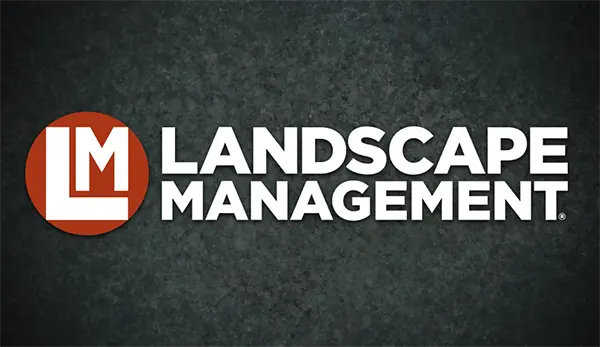By: Curt Harler
For lawn care operators (LCOs), less might be more in fertilization this year.
“A lot of our focus is on trying to make the product as economical for the LCO as possible,” says Mike Sisti, product marketing manager for Lebanon Turf, Lebanon, PA.
 |
With the price of phosphorous (P) going through the roof, Lebanon Turf’s Zero-P initiative has come front-and-center. But the company also is looking at new nitrogen (N) technologies to meet LCOs’ needs.
“About 90% of our product focuses on Zero-P,” Sisti says. “From an environmental and cost standpoint, it makes sense to apply only what you need. With the costs of P and potassium (K) skyrocketing, this has really hit home. This is an industry-wide promotion.”
Mike Bandy, marketing manager of turf products for The Andersons, Maumee, OH, advises that LCOs rethink their overall fertilizer strategy this season. “Phosphorous should only be used where they need it,” he says. “Potassium can be temporarily reduced, but this strategy will eventually affect turf quality.
“Focus on application accuracy,” Bandy says, stressing accurate calibration. Use spreaders with deflectors to keep fertilizer from unwanted areas. LCOs also should look for more slow-release and controlled-release fertilizers on the market.
“Some manufacturers have worked hard to improve the durability of the coatings to allow for more predictable, and longer-lasting nitrogen release,” says Bryan Gooch, marketing manager with Agrium Advanced Technologies, Sylacauga, AL.
Bob Bauwens, industry sales manager for Roots Plant Care Group of Novozymes Biologicals, Salem, VA, adds: “Look for improvements in the longevity of materials.” Expect more slow-release and timed-release materials, as well as formulations with dispersible granules, he says. The latter offers minute amounts of product dispersed across the turf with NPK, herbicides and plant stimulants.
“The materials might not be new and innovative, but the way we put them together will give the user better and more effective use,” Bauwens says.
Older sulfur-coated urea technologies still suffer from what is known as catastrophic release, where N might release all at once. Gooch says his company’s new XCU brand of sulfur-coated technology has a proprietary new coating process that emphasizes durability.
Don Myers, product development manager for herbicides and plant growth regulators (PGRs) with Bayer Environmental Science, says he expects there will continue to be restrictions on certain materials, and that costs will continue to rise. “We are seeing a downward blip in oil prices … but if you think it will stay that way, think again,” he says.
Volatile prices
“Increased demand for food in India and China and fluctuating prices of domestic crops are just two of the factors involved — but if history repeats itself, we may see another run up in prices by the second quarter of 2009,” Gooch says.
Bandy agrees but says, “No one expects a repeat of last year’s major increases.” K should remain fairly strong, he believes, as fertilizer raw material producers are idling capacity to keep the market in balance.
“The good news is we got a wake-up call from the prices of fuel and fertilizer,” Bauwen adds. “It made us rethink how we go to business. But these times will pass; American innovation will get us through them to a new day.”
Whatever the cost, customers like green lawns. Sisti says Lebanon Turf Stabilized Nitrogen (LSN) is one product that reduces the volatility of nitrogen. Even if the lawn gets no rain for 14 days, the N-value remains. Contrast that to urea, which will volatilize into the atmosphere over two weeks’ time.
Lebanon Turf also offers a product called MESA, a methylene urea fertilizer with ammonium sulfate. “MESA gives a longer N release so it slowly feeds the turf over an eight-week span,” Sisti says. This means fewer truck-rolls required to fertilize a lawn.
“It also gives a brilliant green color right away,” he adds.
Gooch says research shows that increasing the amount of N in a fertilizer blend coming from a slow-release source improves the efficiency of N uptake. “In many cases, you can use less total nitrogen and get equal or better greening, compared to blends with soluble sources of nitrogen,” he says.
Learning opportunities
Bauwens says LCOs are being pressured to reduce the amount of nitrogen and phosphorous put on turf, and the industry needs to learn more about using “nutritional feeds” for turf rather than focusing only on NPK.
LCOs need to do their own research, and not rely solely on university recommendations when it comes to building their lawn care programs, Bauwen advises. “Things are changing so fast that university researchers might not have all of the data they need at hand.”
Do trials under your own, local growing conditions, he advises.
“Most landscapers and lawn professionals don’t know that there are controlled-release fertilizers that can last for six months with one application,” Gooch adds. “This type of fertilizer can be a great choice for a commercial account that is under annual contract.”
Harler is a freelance writer who lives in Strongsville, OH. Contact him at curt@curtharler.com.

